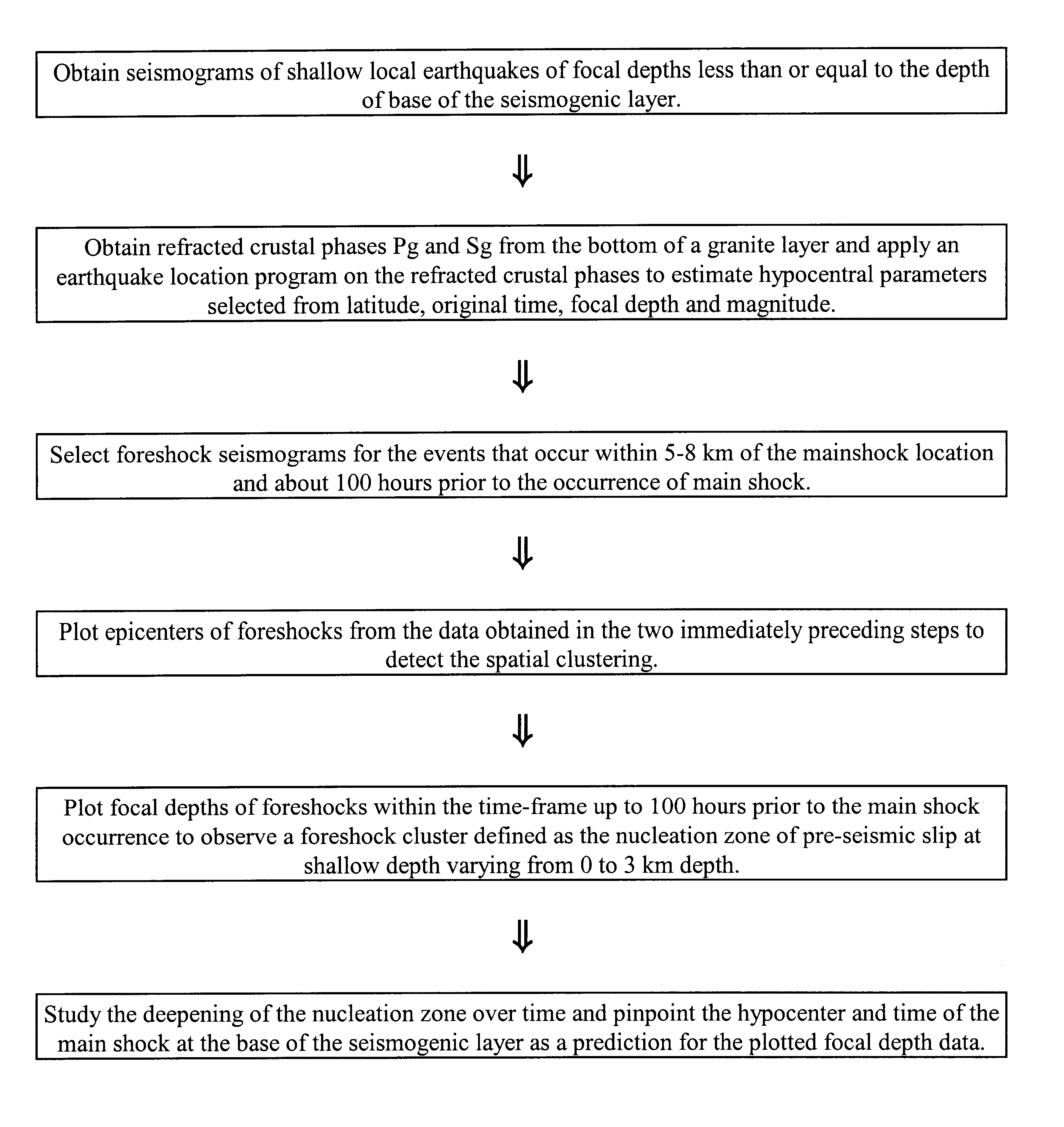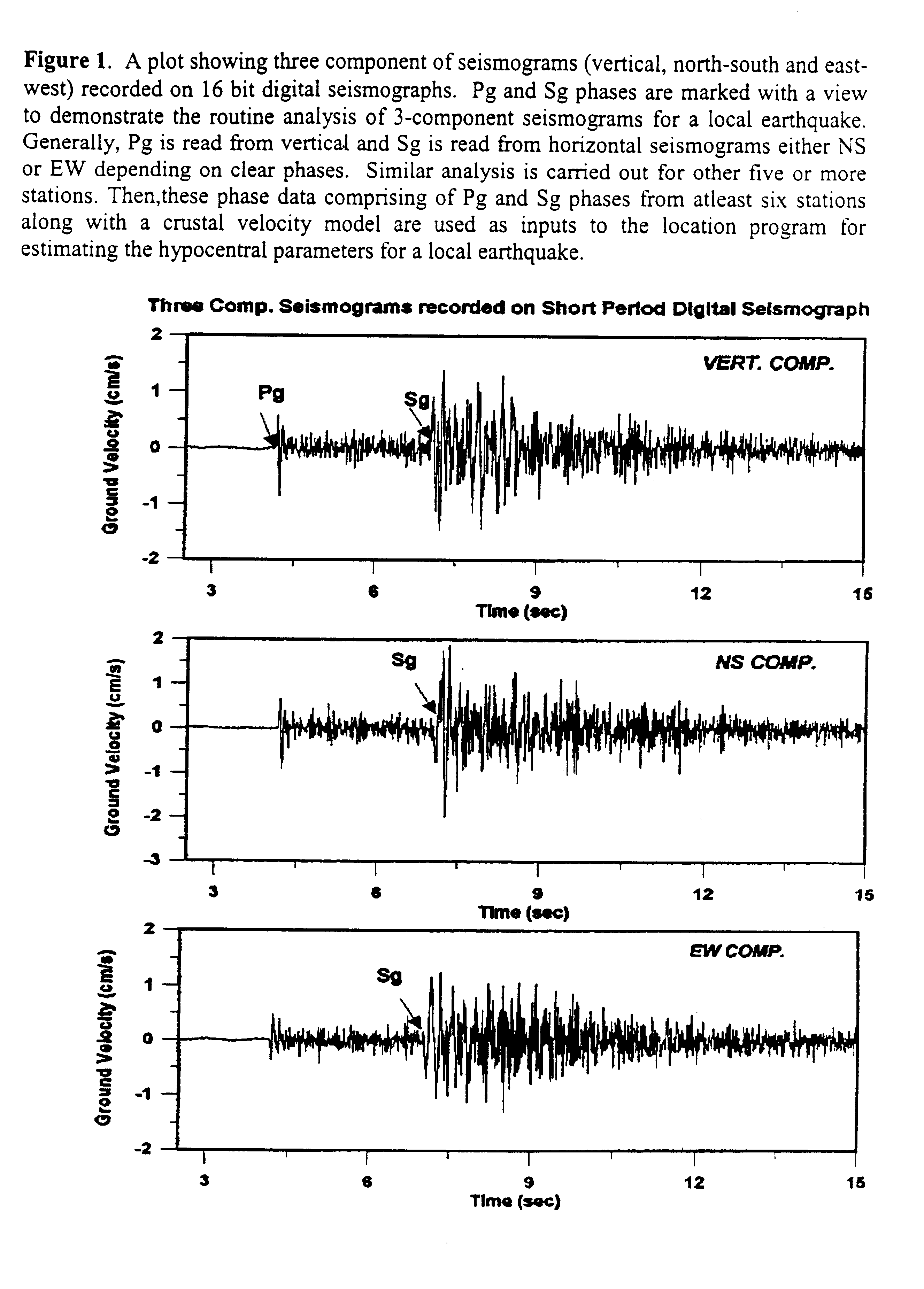Method of short term forecasting of moderate size earthquakes
a technology of short-term forecasting and earthquakes, applied in the field of digital implementation of short-term forecasting of moderate-sized reservoir-triggered earthquakes, can solve the problems of non-linear and heterogeneous, significant damage, and difficulty in deterministic prediction
- Summary
- Abstract
- Description
- Claims
- Application Information
AI Technical Summary
Benefits of technology
Problems solved by technology
Method used
Image
Examples
example 2
FIG. 3 shows a nucleation process study for the Mar. 12, 1995 event of M4.7. As shown in FIG. 3, the nucleation process study for the Mar. 12, 1995 event includes (a) an Epicentral location map for the foreshocks, and (b) a depth versus time plot for the foreshocks.
In another example, FIG. 3 shows a total of 6 foreshocks of M 1.0 to 2.7 for 12 March (M4.7) event clustered along a 7 km.times.3 km area trending NNE-SSW along the north Koyna fault. It is seen that the maximum depths of foreshocks deepened from 1 to 9 km in 100 hours time.
example 3
FIG. 4 shows a nucleation process study of the Apr. 26, 1996 event of M4.4. As shown in FIG. 4, the nucleation process study for the Apr. 26, 1996 event includes (a) an Epicentral location map for the foreshocks, and (b) a depth versus time plot for the foreshocks.
In another example, FIG. 4 demonstrates the nucleation process for the Apr. 26, 1996 event of M4.4. Foreshocks clustered in a zone of 8 km length along the south Koyna fault. The mainshock was preceded by 47 foreshocks of magnitude M1.0 to 3.7 in 100 hr.
example 4
FIG. 5 shows a nucleation process study of the Mar. 12, 2000 event of M5.6. As shown in FIG. 5, the nucleation process study for the Mar. 12, 2000 event includes (a) an Epicentral location map for the foreshocks, and (b) a depth versus time plot for the foreshocks.
In another example, FIG. 5 demonstrates the nucleation process for the Mar. 12, 2000 event of M5.1. The most concentrated zone of foreshocks extends for 8 km in NW-SE direction along KRFZ. The hypocentral depths of foreshocks deepen from 1 to 5.2 km in 100 hours. For the main shock of Mar. 12, 2000, the earthquake rupture nucleated near a junction of Koyna River Fault Zone and a satellite fault P1 at a depth of 1 km and then propagated northwesterly to cause the main shock on the KRFZ at 5.2 km depth.
PUM
 Login to View More
Login to View More Abstract
Description
Claims
Application Information
 Login to View More
Login to View More - R&D
- Intellectual Property
- Life Sciences
- Materials
- Tech Scout
- Unparalleled Data Quality
- Higher Quality Content
- 60% Fewer Hallucinations
Browse by: Latest US Patents, China's latest patents, Technical Efficacy Thesaurus, Application Domain, Technology Topic, Popular Technical Reports.
© 2025 PatSnap. All rights reserved.Legal|Privacy policy|Modern Slavery Act Transparency Statement|Sitemap|About US| Contact US: help@patsnap.com



